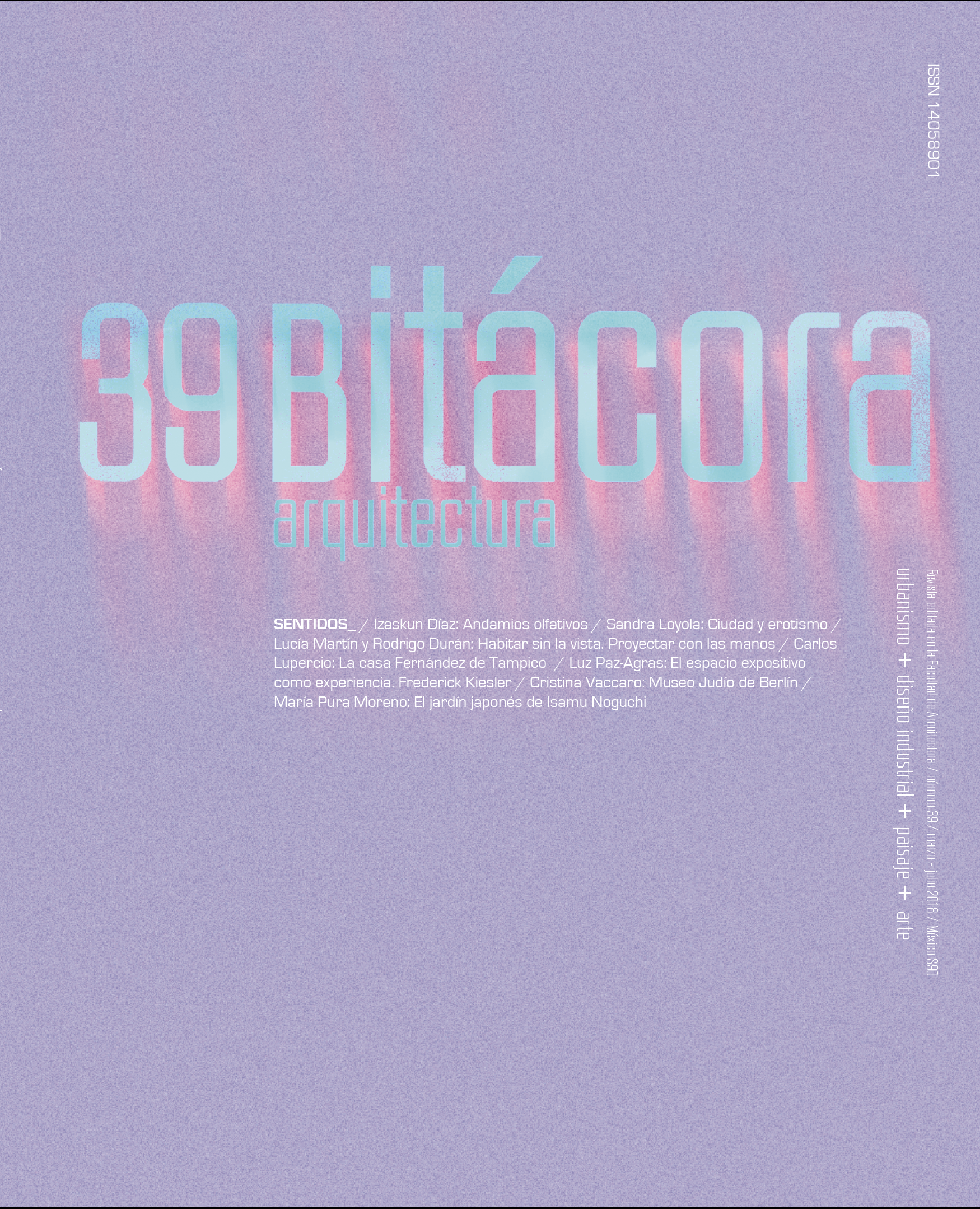senses
Main Article Content
Abstract
Reflections on perception and the senses are essential to understanding the moment in which a work of architecture, an urban space or an interior becomes meaningful. When a place is truly revealing, it is perceived as a complete atmosphere, it has musical qualities, textures of different materials, complex smells, a certain degree of humidity; it is the combination of these perceptions, experienced in solitude or in proximity to other bodies – even in the midst of the multitude – and in movement. These places allow us to find some meaning to existence, or at the very least a consciousness of the present or nostalgia for the past. Whether in our everyday lives or in exceptional circumstances, we experience them through our senses. The meaning of architecture cannot be reduced to objectivity; it arises from an emotional, multisensory experience.
Thanks to many recent movies, we can understand how sounds immediately situate us: through the flute of a knife sharpener, the whistle of a sweet potato seller, the siren of an ambulance, we are conscious of the auditory identity of a city. But something must be done to ensure that these sounds do not disappear, as they are incredibly vulnerable. Some foreigners swear that Mexico City smells like nixtamalized corn meal, even from the airplane. In other words, the city also has an aromatic identity, which can also disappear. What does architecture smell like? For this issue, we have proposed an olfactory experiment that smells of metal, lacquer and glass, of modernity and spaciousness. Or in the words of its designer, Izaskun Díaz Fernández, “a fragrance that captures the importance of the sensory properties of the materials, the work, the people that built it and live in it and of all the factors covered by the term ‘architecture.’ Metal, earth (brick), dust (cement, concrete and stone) and wood.”
Article Details
Citas en Dimensions Service
Bitácora Arquitectura by Universidad Nacional Autónoma de México is licensed under a Creative Commons Reconocimiento-NoComercial-SinObraDerivada 4.0 Internacional License.
Creado a partir de la obra en http://arquitectura.unam.mx/bitacora.html.

